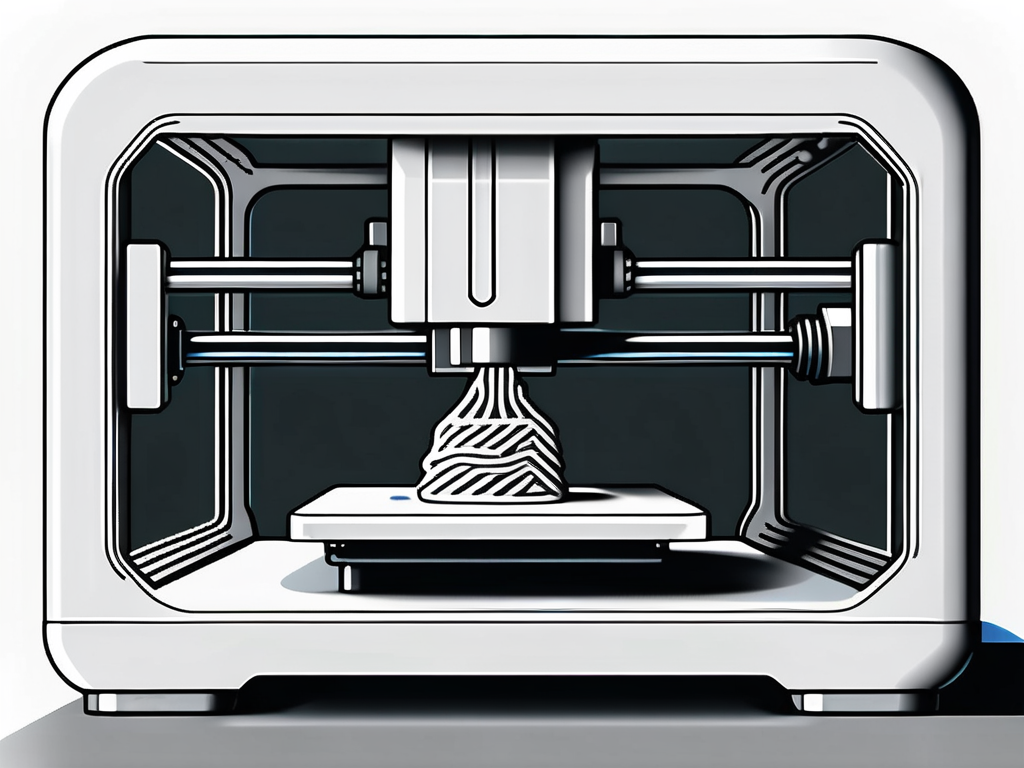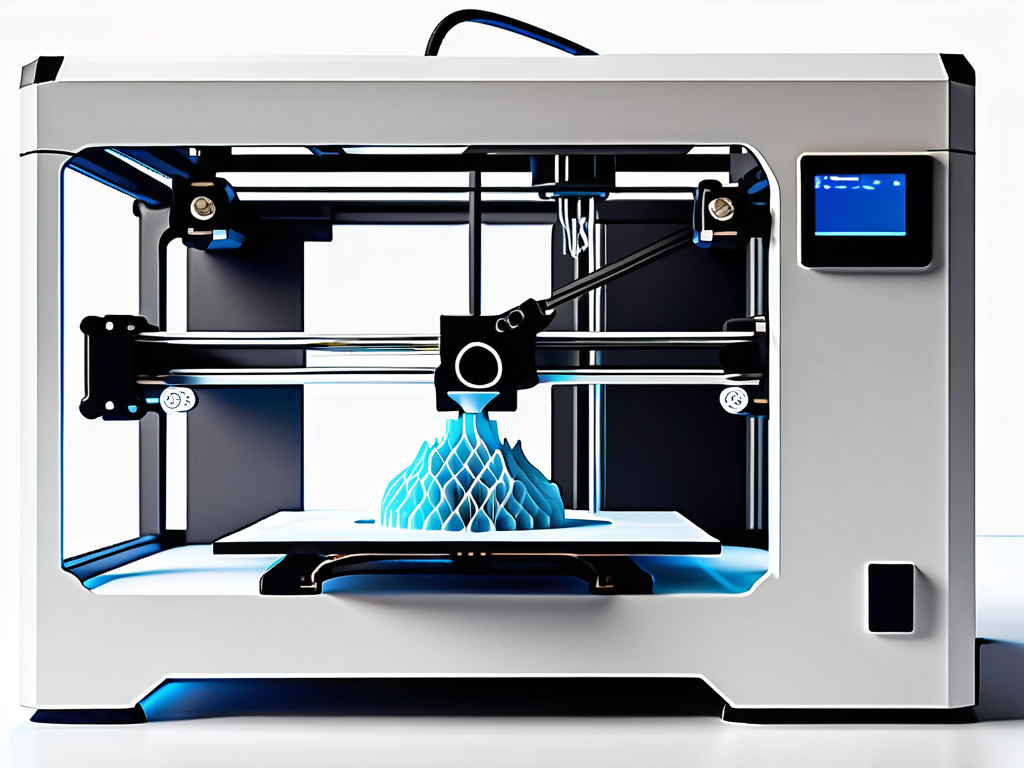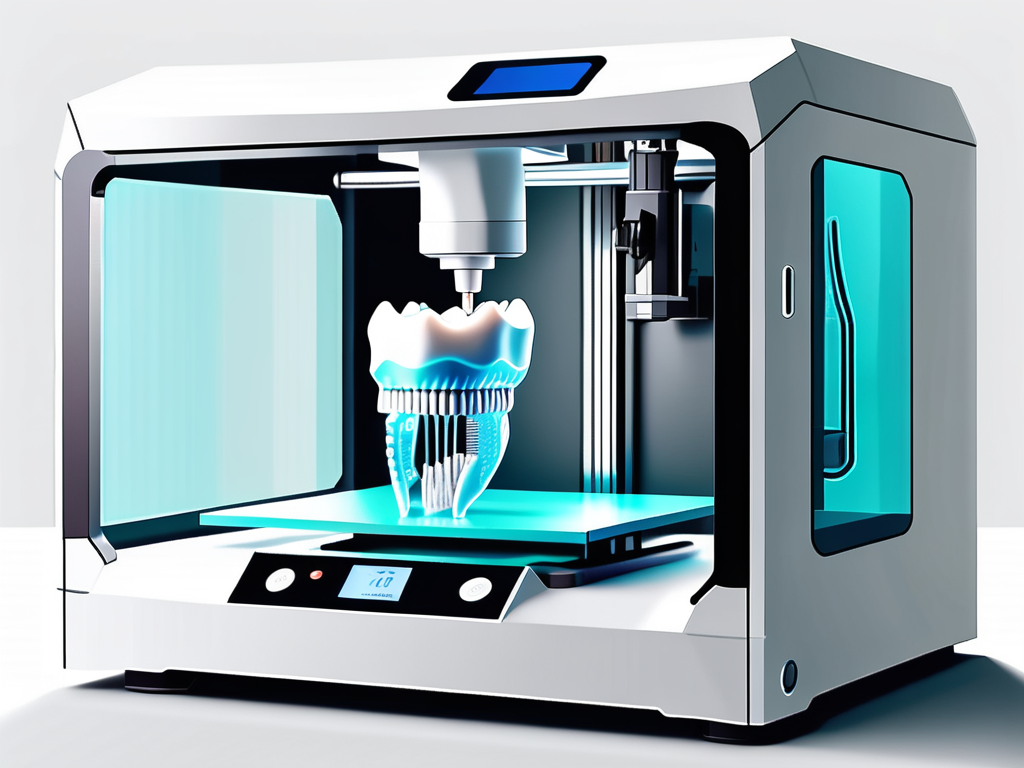In recent years, 3D printing has emerged as a technological game-changer in various industries. From manufacturing to healthcare, this groundbreaking technology has revolutionized the way we create and design products. One area where 3D printing has made a significant impact is in the production of custom mouth guards. This article explores the various aspects of 3D printing technology, its role in dentistry, the evolution of custom mouth guards, the process of 3D printing mouth guards, the benefits they offer, and the potential future prospects in this field.
Understanding 3D Printing Technology
Before delving into its applications in dentistry, it is essential to have a basic understanding of 3D printing technology. Also known as additive manufacturing, 3D printing is a process that involves creating three-dimensional objects layer by layer using a digital file as a blueprint. This innovative technology utilizes various materials, such as plastics, metals, ceramics, and even living cells, to construct complex and intricate structures.
3D printing has gained popularity across various industries due to its versatility and efficiency. The ability to rapidly prototype and manufacture custom parts and products has transformed manufacturing processes, allowing for greater flexibility and creativity in design. In addition to traditional materials, advancements in 3D printing technology have enabled the use of composite materials and hybrid structures, expanding the possibilities for innovation.
The Basics of 3D Printing
At its core, 3D printing relies on a three-step process. First, the digital blueprint of the object is created using computer-aided design (CAD) software. This design is then sliced into thin horizontal layers, each representing a physical cross-section of the object. Finally, the 3D printer follows these layers' instructions to build the object layer by layer, typically through the extrusion or deposition of the chosen material.
The precision and accuracy of 3D printing technology have made it a valuable tool in various fields, including aerospace, automotive, healthcare, and architecture. The ability to produce complex geometries and intricate designs with minimal waste has revolutionized manufacturing processes and product development, leading to cost savings and accelerated innovation.
The Role of 3D Printing in Dentistry
Within the field of dentistry, 3D printing is revolutionizing dental care by providing efficient and accurate solutions for a range of applications. From dental implants to orthodontic aligners, the ability to create customized dental appliances using 3D printing technology has transformed the way oral healthcare professionals operate. One particular area in which 3D printing has gained significant traction is the production of custom mouth guards.
The customization capabilities of 3D printing allow for precise fitting of dental appliances, improving patient comfort and treatment outcomes. By utilizing digital scans of patients' teeth, dental professionals can create tailored solutions that address individual needs effectively. This personalized approach to dental care not only enhances patient experience but also streamlines the production process, reducing lead times and enhancing overall efficiency.
The Evolution of Custom Mouth Guards
Custom mouth guards have long been used to protect teeth and provide relief from issues such as teeth grinding and jaw clenching. Traditionally, these mouth guards were crafted using labor-intensive methods that involved taking impressions of the patient's teeth and then manually fabricating the guard. However, with the advent of 3D printing, the production process has undergone a remarkable evolution.
Traditional Methods of Creating Mouth Guards
Before 3D printing technology became widely accessible, creating custom mouth guards involved multiple steps. First, a physical impression of the patient's teeth was taken using materials such as alginate. This impression was then cast into a stone model, which served as the basis for fabricating the mouth guard. Using dental acrylic, the technician would carefully sculpt the guard to fit the patient's teeth. This laborious process often required tedious adjustments and resulted in a lengthy turnaround time.
During the manual fabrication process, dental technicians had to rely on their expertise and artistic skills to create a mouth guard that would provide optimal comfort and protection for the patient. Each step required meticulous attention to detail, from pouring the stone model to shaping the guard. The craftsmanship involved in this traditional method was undoubtedly impressive, but it also left room for human error and inconsistencies.
The Shift to 3D Printed Mouth Guards
3D printing has revolutionized the production of custom mouth guards by streamlining the entire process. With the aid of intraoral scanners, digital impressions of the patient's teeth can now be obtained quickly and accurately. These digital impressions are then used to design the mouth guard using specialized software. Once the design is finalized, the 3D printer takes over, fabricating the mouth guard with precision and efficiency. This shift to 3D printed mouth guards has significantly reduced production time and improved the overall patient experience.
One of the key advantages of 3D printing technology is its ability to create highly precise and consistent mouth guards. The digital design ensures that each mouth guard is tailored to the patient's unique dental anatomy, ensuring a perfect fit. Furthermore, the automated nature of 3D printing eliminates the need for manual adjustments, reducing the chances of human error and improving the overall quality of the mouth guard.
Another benefit of 3D printed mouth guards is the increased accessibility they offer. With traditional methods, patients often had to wait weeks to receive their mouth guards due to the time-consuming fabrication process. However, with 3D printing, mouth guards can be produced in a matter of hours or days, allowing patients to receive their custom guards much more quickly. This not only improves patient satisfaction but also enables dental professionals to provide prompt and efficient care.
The Process of 3D Printing Mouth Guards
Creating a 3D printed mouth guard involves several steps, each contributing to the final product's quality and fit. From designing the mouth guard to post-processing the printed object, meticulous attention is given to detail throughout the entire process.

3D printing technology has revolutionized the way mouth guards are produced, offering a more precise and customized solution for patients with bruxism or teeth grinding issues. The process begins with a comprehensive examination of the patient's teeth, where digital impressions are taken using intraoral scanners to capture the exact contours of the mouth.
Designing the Mouth Guard
The first step in producing a 3D printed mouth guard is designing the appliance using specialized software. Dentists or dental technicians utilize the digital impressions obtained from the patient to create a customized design that fits the patient's teeth precisely. The software allows for adjustments in thickness, shape, and other dimensions to ensure optimal comfort and functionality.
Designing the mouth guard involves not only creating a perfect fit but also considering factors such as airflow and material flexibility to enhance the wearer's comfort. By digitally sculpting the mouth guard, professionals can tailor the appliance to address specific dental issues while ensuring a comfortable fit that promotes better oral health.
Printing and Post-Processing
Once the design is finalized, it is time for 3D printing. The mouth guard design is sent to a 3D printer, which meticulously constructs the guard layer by layer using a biocompatible material. After printing, the mouth guard undergoes post-processing, which involves removing any support structures, polishing the surface, and quality checking to ensure a flawless end product.
Post-processing is a critical stage in the production of 3D printed mouth guards, as it ensures that the final product meets the highest standards of quality and aesthetics. Dental technicians carefully inspect the mouth guard, making any necessary adjustments to ensure a perfect fit before delivering it to the patient. The meticulous attention to detail in post-processing guarantees that the 3D printed mouth guard not only provides effective protection but also offers superior comfort for the wearer.
Benefits of 3D Printed Mouth Guards
The shift to 3D printed mouth guards offers numerous benefits for patients and oral healthcare professionals alike. These benefits extend beyond the improved production process and include enhanced precision, comfort, speed, and efficiency.

Precision and Comfort
Thanks to the digital design process and the accuracy of 3D printing, custom mouth guards can be tailored to fit a patient's teeth with unparalleled precision. This ensures optimal comfort and promotes better protection against teeth grinding and jaw clenching.
Speed and Efficiency
Compared to traditional methods, 3D printing significantly reduces the time required to produce custom mouth guards. The digital process eliminates the need for physical molds, wasteful material usage, and manual adjustments. As a result, dentists can provide their patients with high-quality mouth guards promptly.
Future Prospects of 3D Printing in Dentistry
The advancements in 3D printing technology offer exciting future prospects for the production of custom mouth guards and other dental appliances.

Potential Developments in Mouth Guard Production
As 3D printing technology continues to evolve, it is likely that new materials and manufacturing techniques will emerge, further enhancing the performance and comfort of mouth guards. Additionally, the integration of digital scanning and software solutions may enable real-time adjustments and customization, allowing for more precise and tailored mouth guards.
Broader Implications for Dental Health Care
Beyond mouth guards, 3D printing holds promise for other aspects of dental care. From dentures and crowns to surgical guides and orthodontic appliances, the ability to create customized 3D printed dental solutions has the potential to transform the industry, improving patient outcomes and the overall quality of dental health care.
Conclusion
As 3D printing technology continues to advance, the production of custom mouth guards has been significantly transformed. The shift from traditional methods to 3D printing offers precision, efficiency, and comfort for both patients and oral healthcare professionals. With the ability to create tailored mouth guards using digital impressions and specialized software, dentistry has stepped into a new era. This innovation not only benefits mouth guard production but also paves the way for further advancements in dental care. As we look to the future, the potential developments and broader implications of 3D printing in dentistry promise a brighter and more customized smile for all.













